Dallas, Texas, United States
Architect: Tom Fazio (2002)
7,372 Yards, Par 72
Rating/Slope: 75.9/145
My Quick Review: Bold design on wild terrain; one of Tom Fazio's best.
Clubhouse

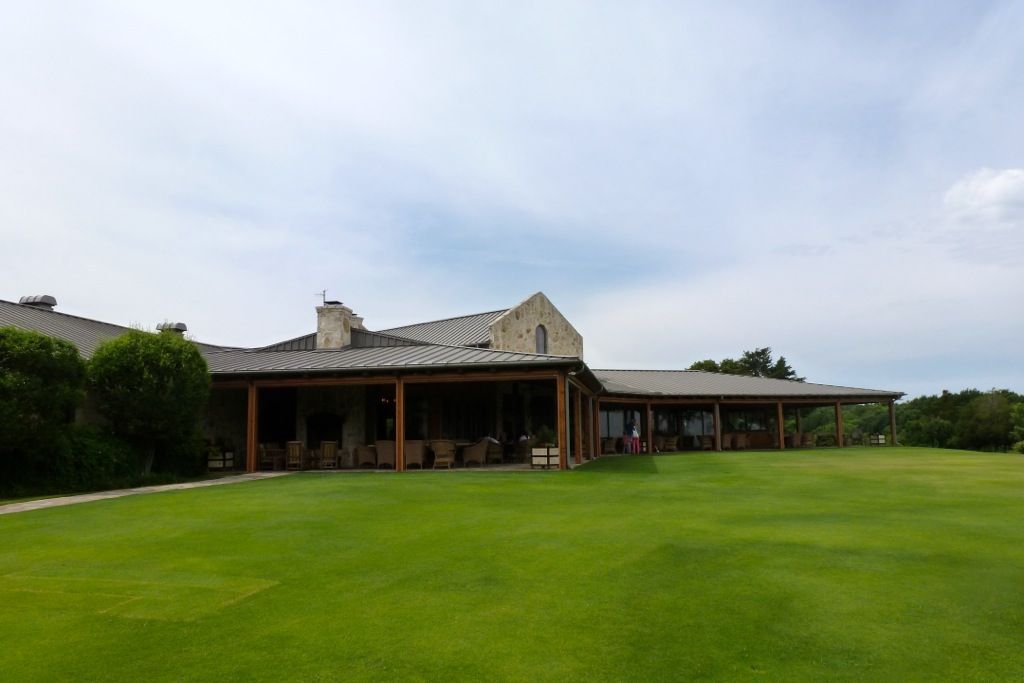
Club Info including some of the many awards the golf course has received...
http://www.dallasnationalgolfclub.com/Default.aspx?p=DynamicModule&pageid=343307&ssid=244797&vnf=1
Holes to Note: All Yardages and pictures from the I tees
Hole 1: Par 4, 346 Yards
I am sure some will find fault here because this is a Fazio design, but I think the 1st at DN is an exceptional opener. While there is plenty of room to miss and playing safe should result in a fairly routine 4, there are opportunities for 3 and 5.
The design is simple and strategic. Play near the fairway bunkering on the fairway that tilts rightward to leave the clearest view of the green.


The approach from the right side of the fairway (about 120 out) is an intimidating one. Playing to the centre of the green is fairly simple, but challenging the pin pictured from this angle and with the ball below one's feet is a difficult task.

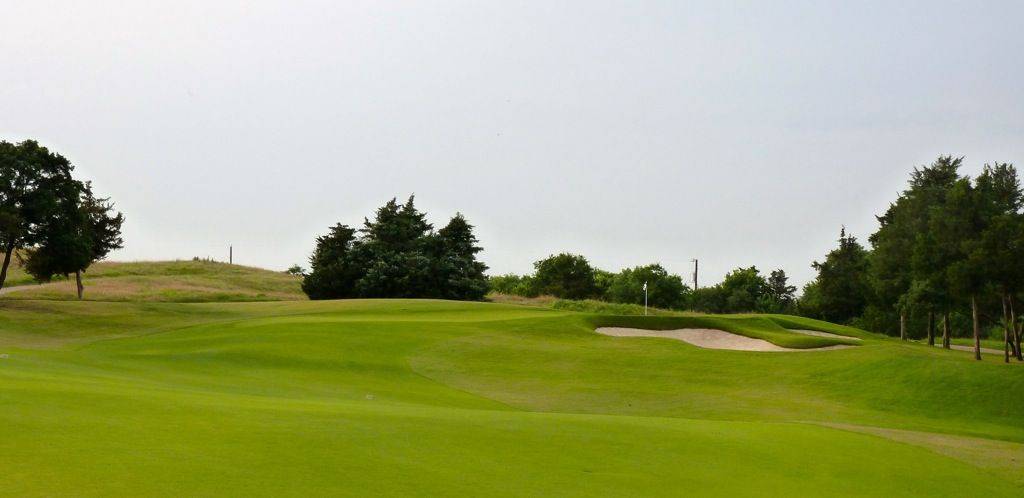
Shots that are pulled (bailed-out) will be repelled by some clever ground movement:

As is the case with most of the greens at DN, large and sweeping movements in the green create the interest

A look back from long-right

Hole 2: Par 5, 521 Yards
The second hole is another very good one. Golfers playing this as a 3-shot hole will want to challenge the bunker guarding the inside of the fairway, though there is plenty of room to bail-out left. Longer hitters must decide whether or not to challenge the bunkers through the fairway, which guard the ideal line into the green.

Playing the 2nd shot from the extreme right side of the fairway allows the golfer to take advantage of the significant width Fazio provides out to the left (from where the golfer has the simplest pitch into the green)

Failing to follow my caddie's advice, I followed the Line of Instinct and played my second shot toward the pin. From this line the approach is a very difficult one.

Green from back-left

Hole 3: Par 3, 170 Yards
The weakest of the opening trio of holes, though nothing offensive here. Playing subtly uphill I suspect that many golfers find themselves a little short here, making the small back portion of the green an even more difficult-to-find target
Back Tee View

Middle Tee View

Green from Left

Hole 6: Par 4, 436 Yards
A blind tee shot over a rise at the 6th, a hole that feels like several at Fazio's 'minimalist' Karsten Creek in Oklahoma. The land first tilts right, then heaves left and near the green again cants rightward. The shape of the land movement gives little in the of visual cues from the tee.

Playing to the inside of the dogleg one is left with this seemingly difficult angle of approach, but that bunker is 30+ yards short of the green and is a terrible example of forced perspective architecture.
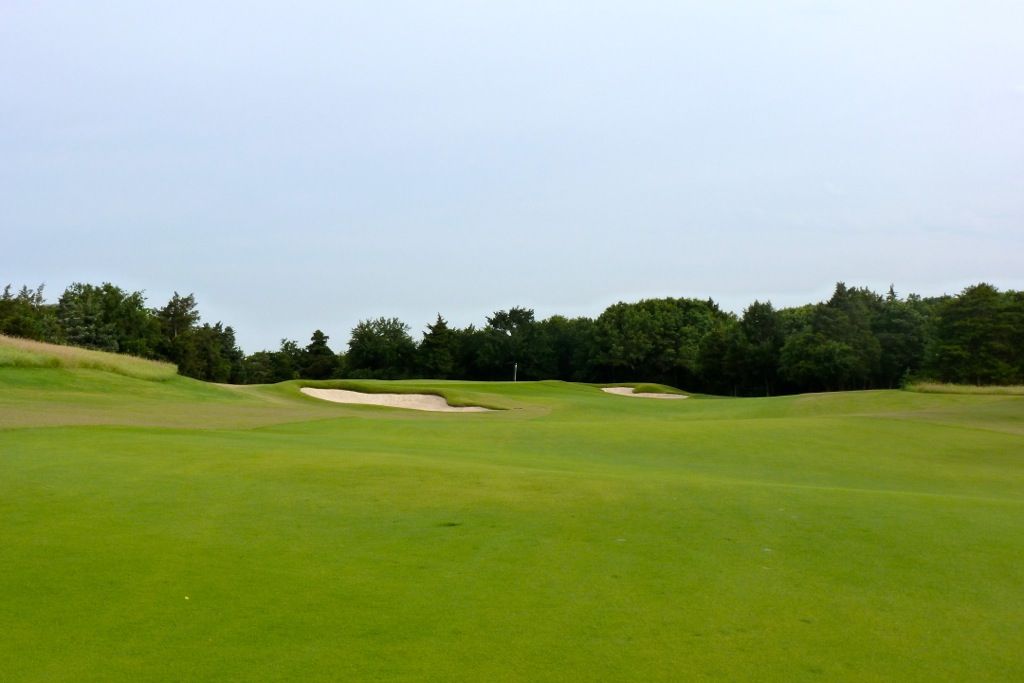


Built up some but tilting with the lay of the land the 6th green is a very difficult one where bailouts left leave a very tricky, downhill recovery.

Hole 7: Par 4, 331 Yards
After only a single par-4 in the first 5 holes, the front-nine concludes with 4 in a row and the 7th is the best opportunity to make birdie. A simple and well-conceived short par-4 that may be driveable for some. From the tee the golfer will want to challenge the fairway bunker on the right to leave a preferred line into the green. A not-so-gently leftward tilted fairway makes keeping the ball on the right side of the fairway a difficult task.


From every position in the fairway the majority of the green is blind, blocked-out by a large scaled green side bunker, but from the right side of the fairway the right portion of the green can be seen and the left portion more easily accessed.

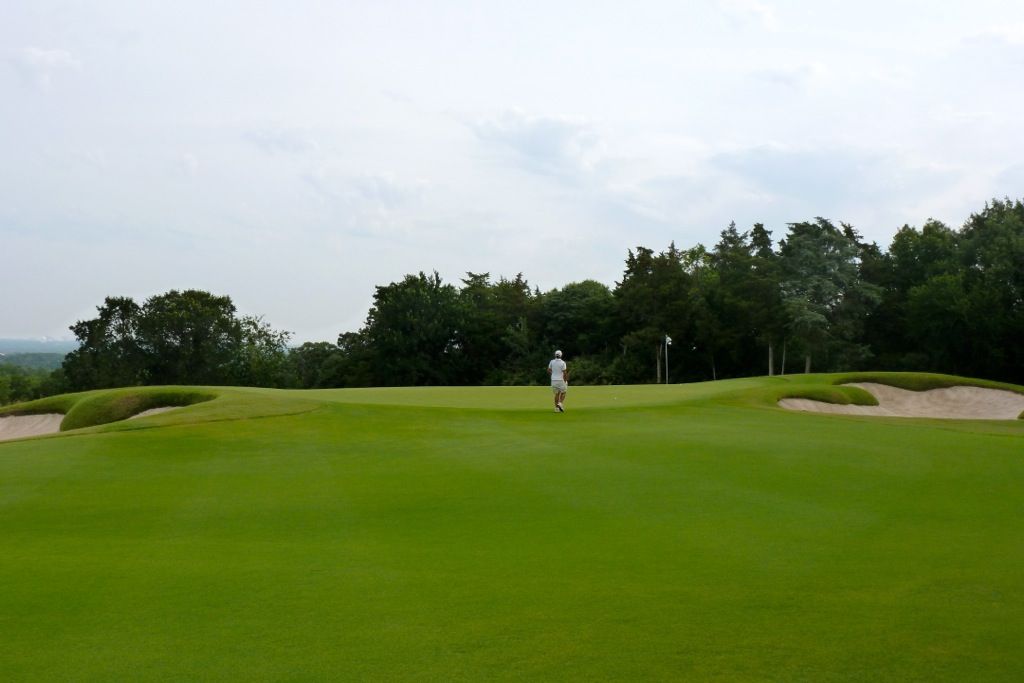
An extremely difficult and undulating green with a back-left portion that tilts away from the tee and a high back-right portion that must be delicately approached as long=dead.


Hole 9: Par 4, 407 Yards
Lots of good stuff going on here. Play near the left-side fairway bunkers for the shortest approach. Play near the right-side fairway bunker for the preferred angle. Above all, hit the fairway as this is one difficult to hit green if out of position!


The approach from the centre of the fairway has an obscured view of the green.




Hole 10: Par 5, 578 Yards
A pretty and downhill hole that will be considered overbunkered by some. The bunker on the left is the only bunker that impacts strategy, and which must be challenged for an ideal line, while the bunkers along the right side of the fairway contain shots that are pushed to the right.


A series of bunkers run diagonally across the fairway. These bunkers must be carried to leave a short (under 120 yards) approach into the green. There is much more room than there appears to the right.


Once over the bunkers the golfer is confronted with an open green front. While the green appears tiny from the fairway, it's width and depth become apparent as the golfer reaches the green's edge.
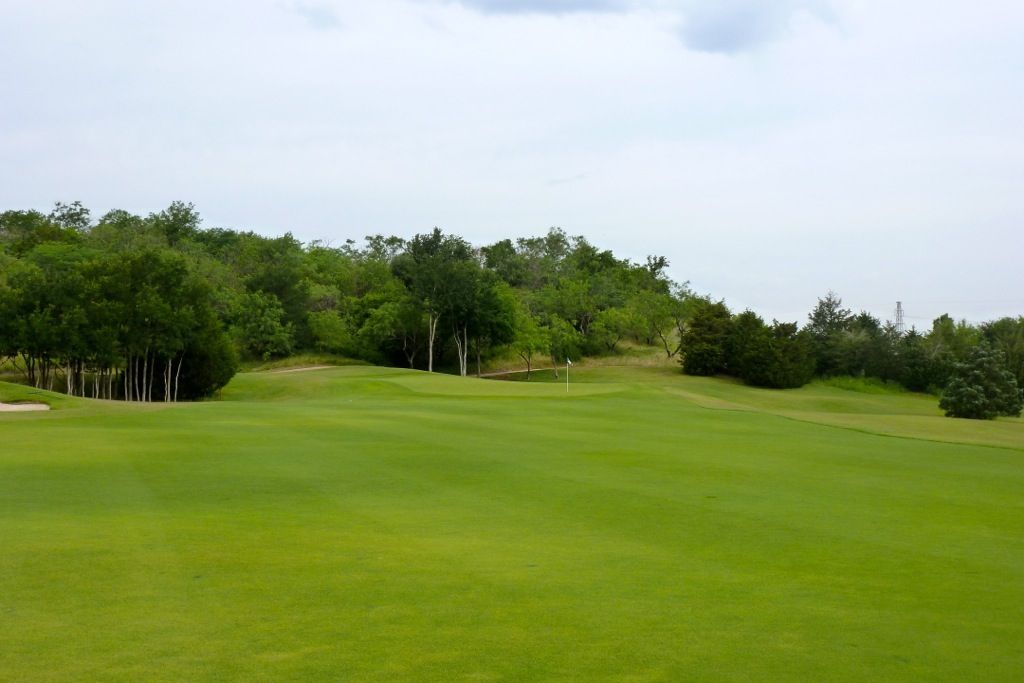

With a left-side 'wing' and a back-portion of the green that runs away from the tee there is much more to this green than can be seen from the fairway.


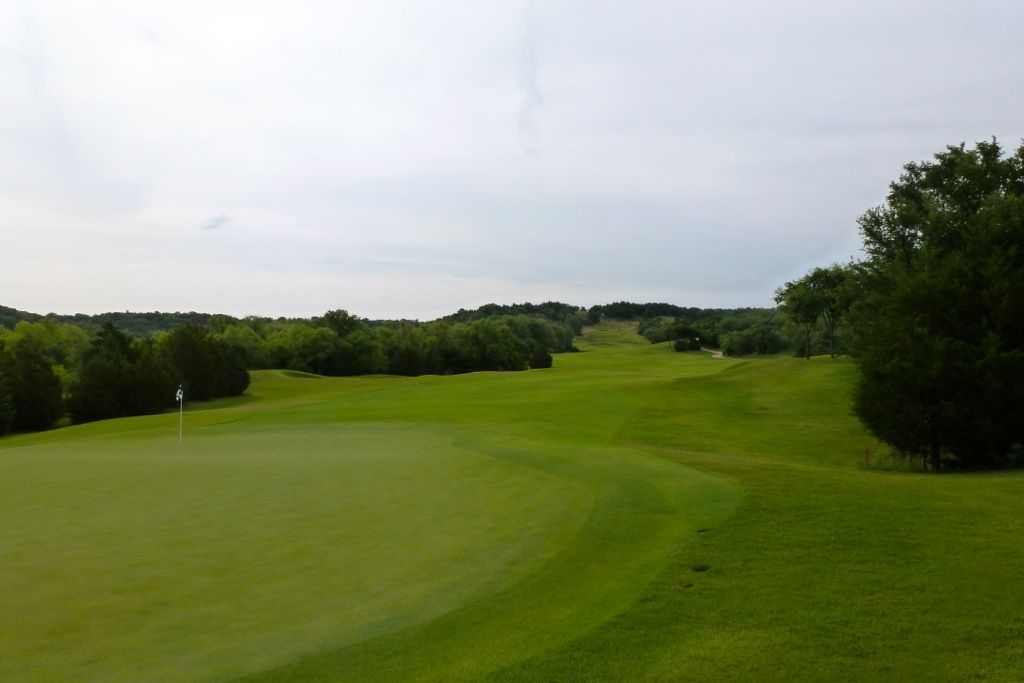
Hole 13: Par 3, 141 Yards
Nowhere to miss here. I missed down by the hazard; my playing partners were two feet off the green to the left. Green tilts so hard from the left that both of them chipped it over the green into the rough. They made 4 and 5. I made 3 pitching into the slope of the green. I'm not sure if this hole is clever or terrible. Thoughts?



Hole 17: Par 3, 225 Yards -- I've noticed that on some of his recent work, Tom Fazio likes to design a par-3 that plays through blasted rock. However, unlike the 7th at Gozzer Ranch (a similar hole), the 17th green at DN does not have the same very cool 'encircled in rock' feeling.




No comments:
Post a Comment